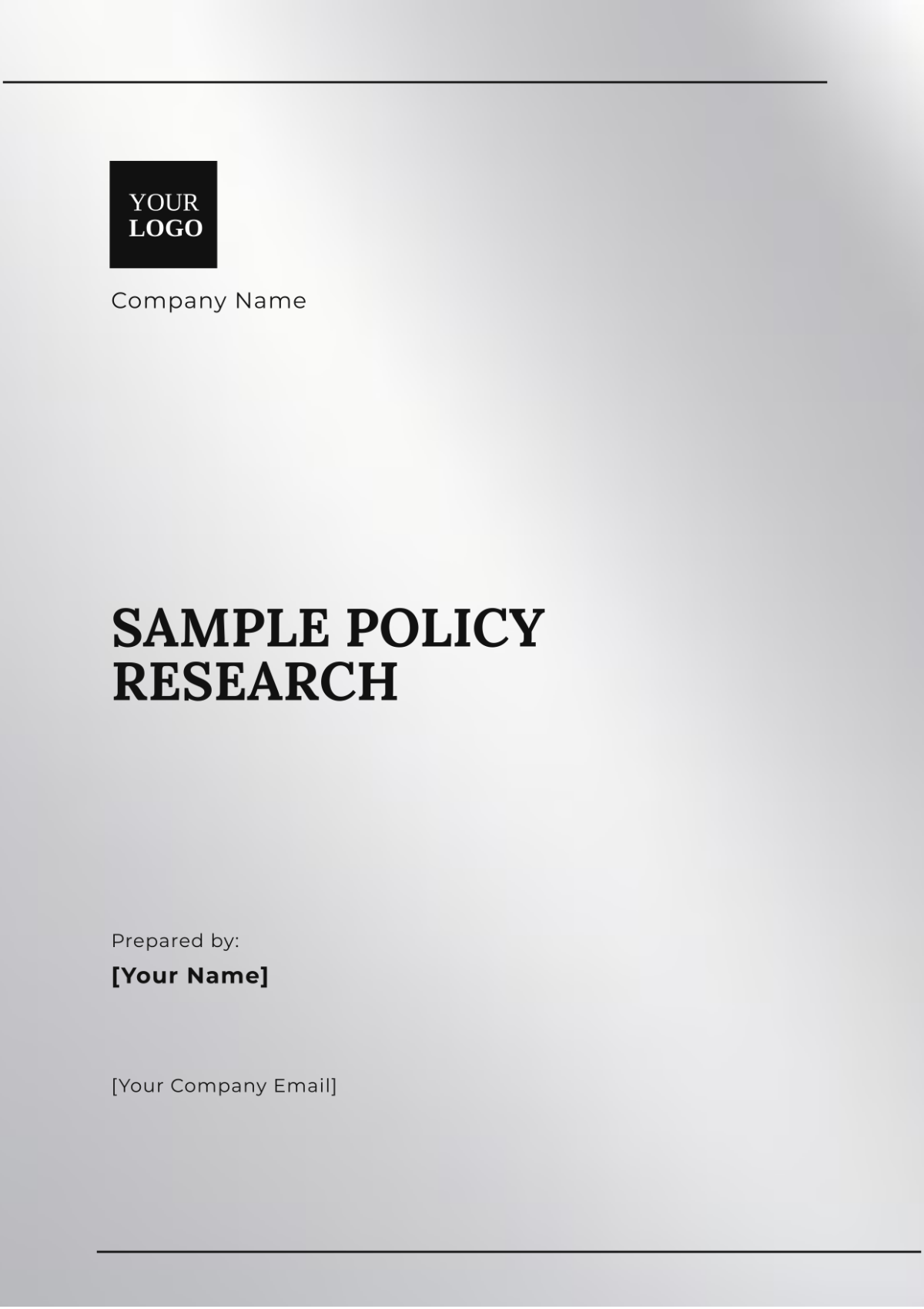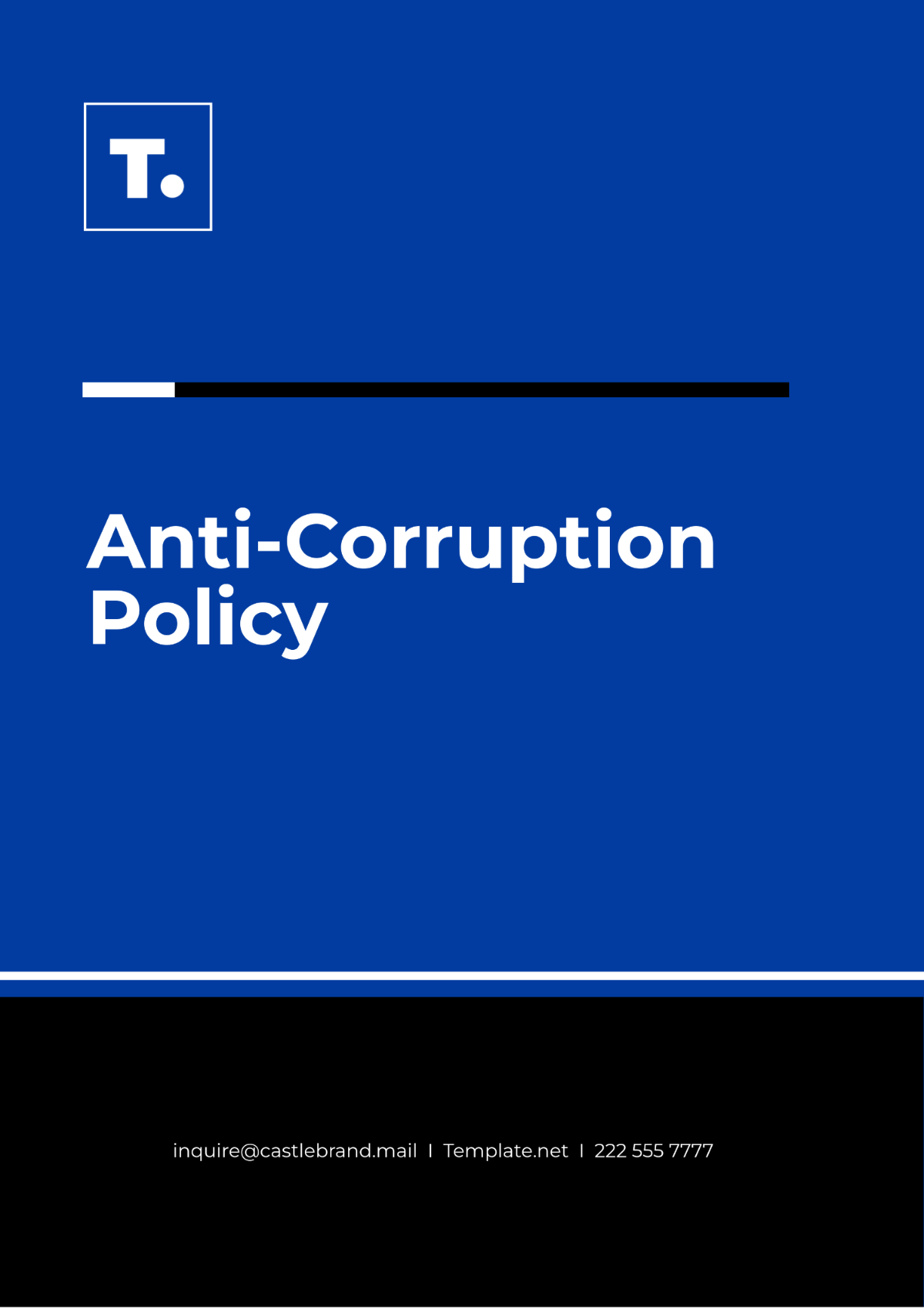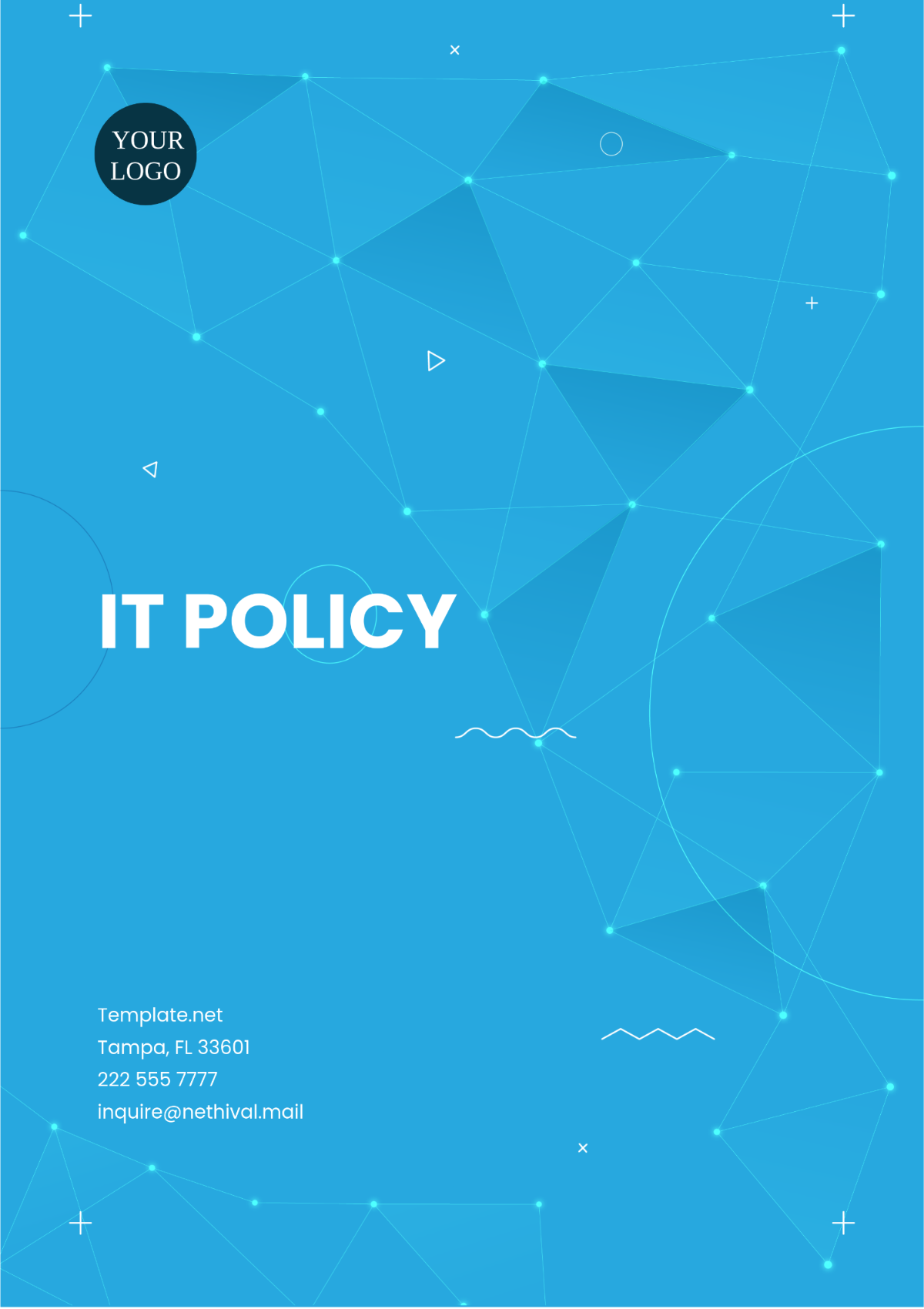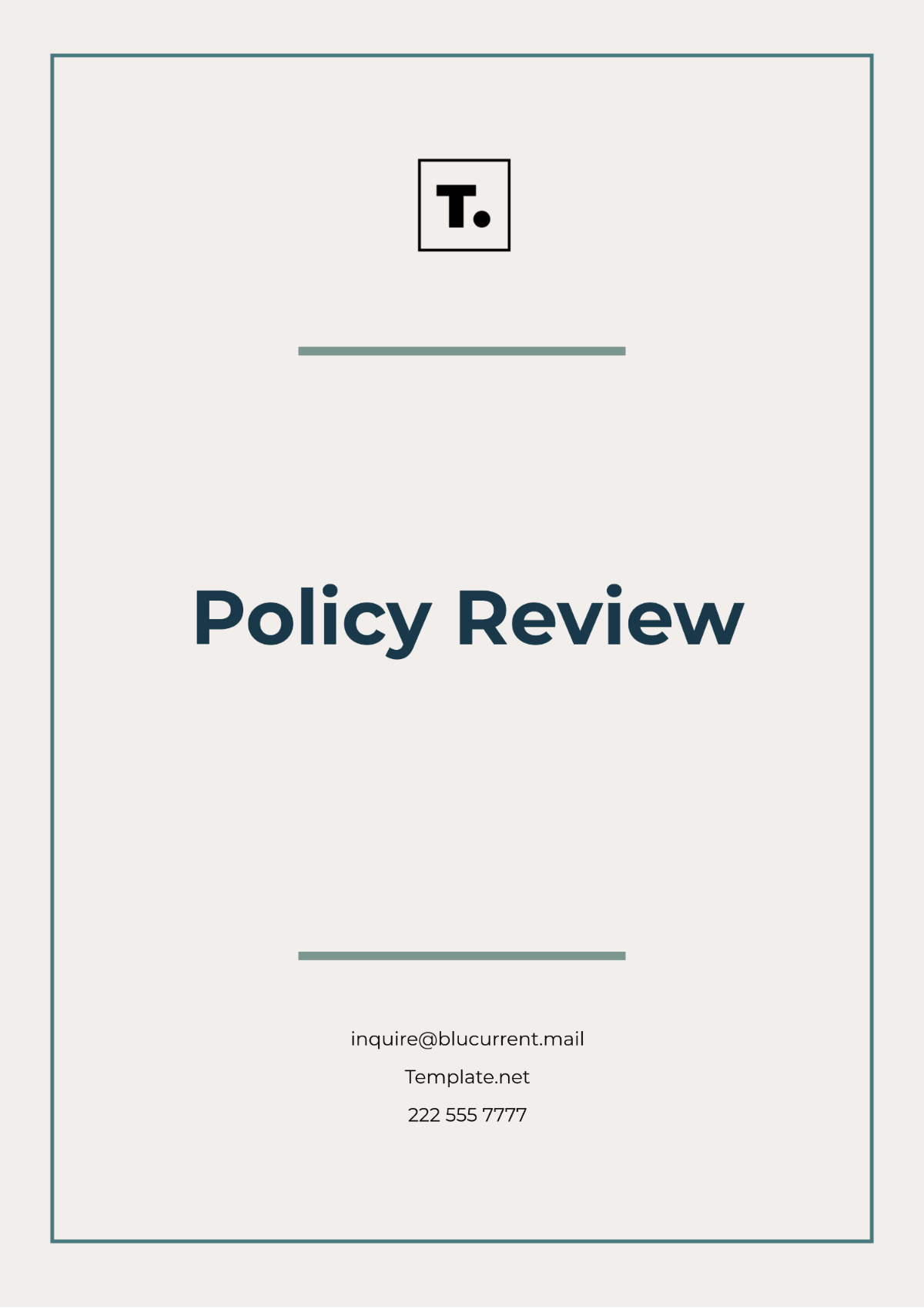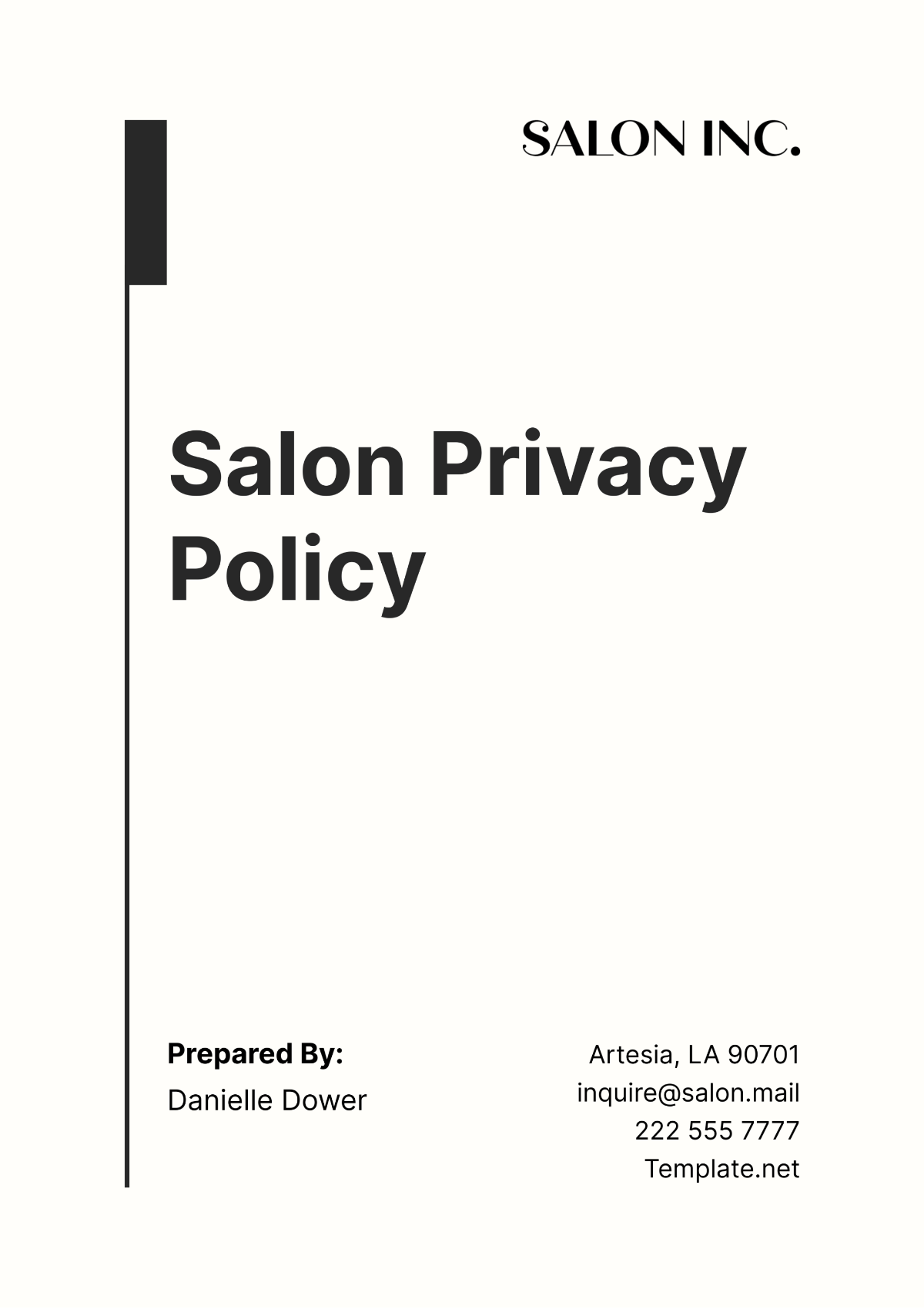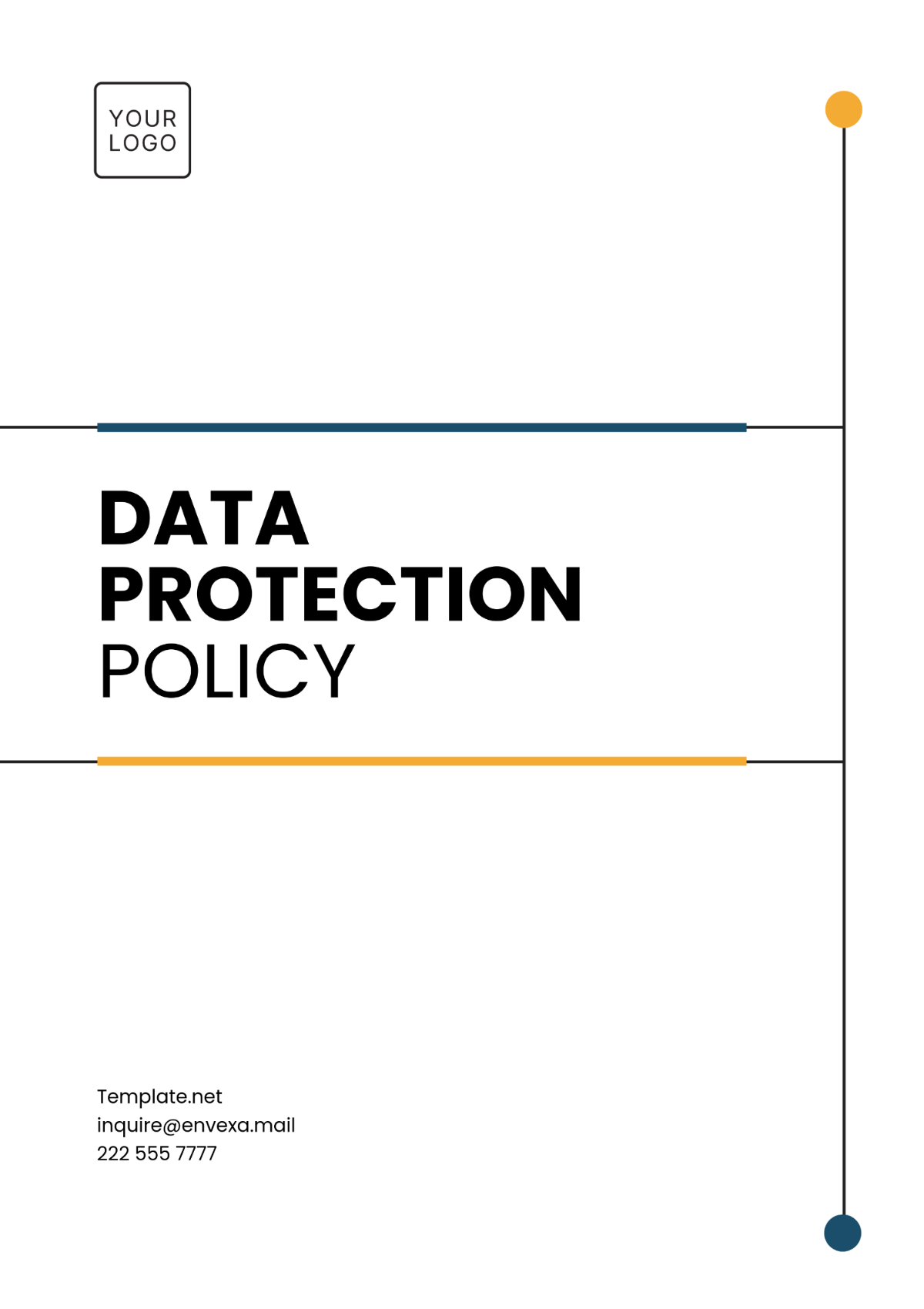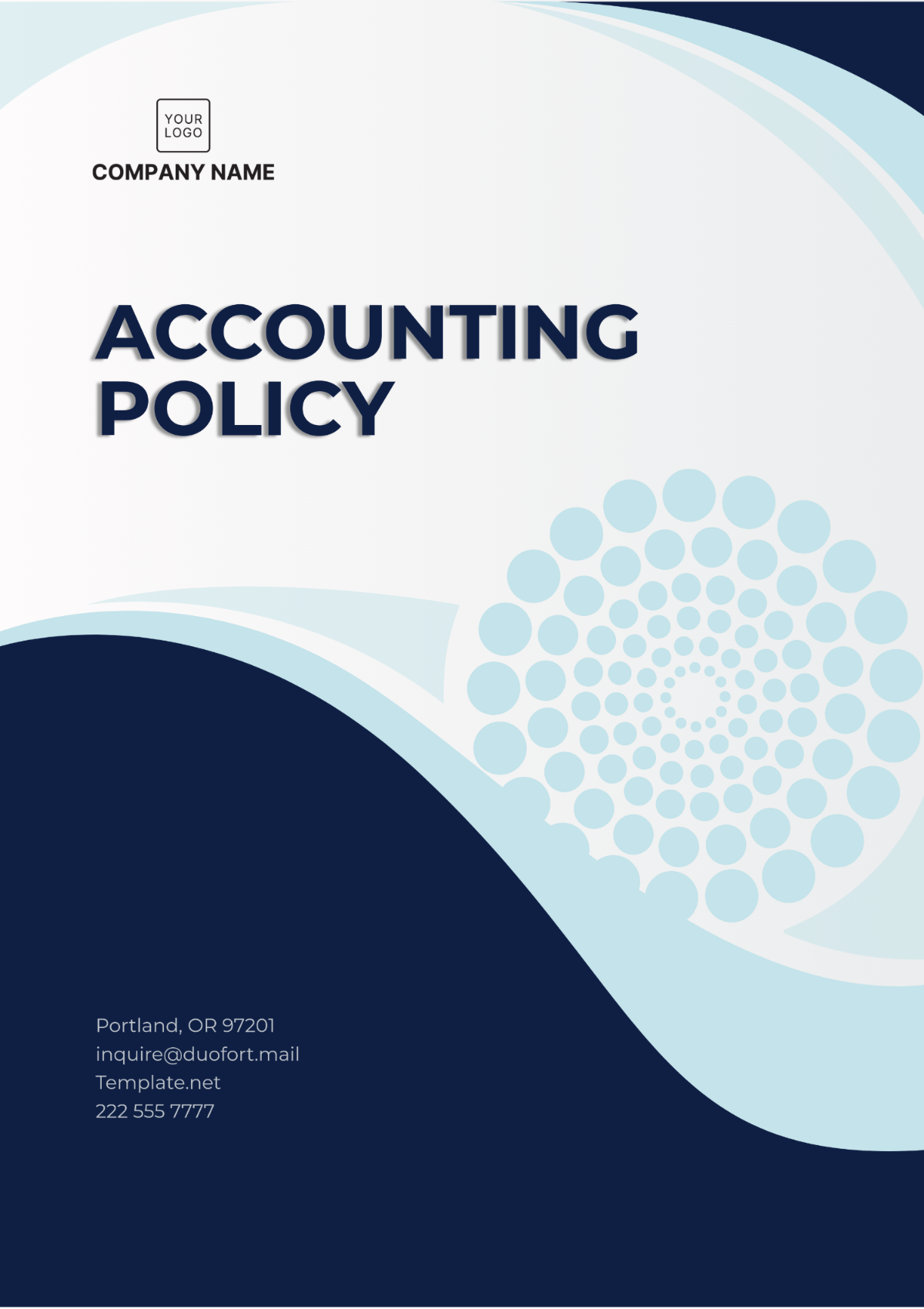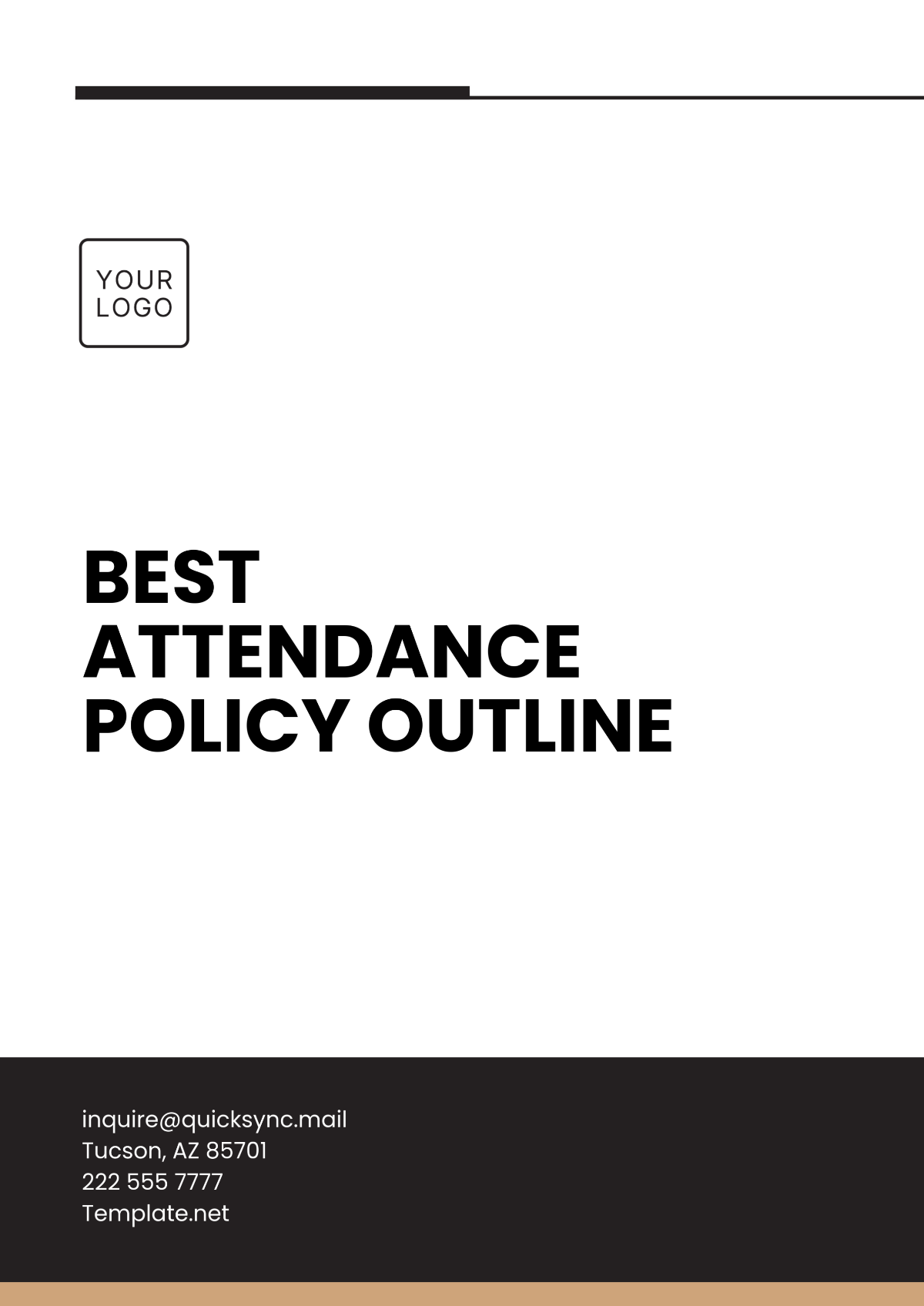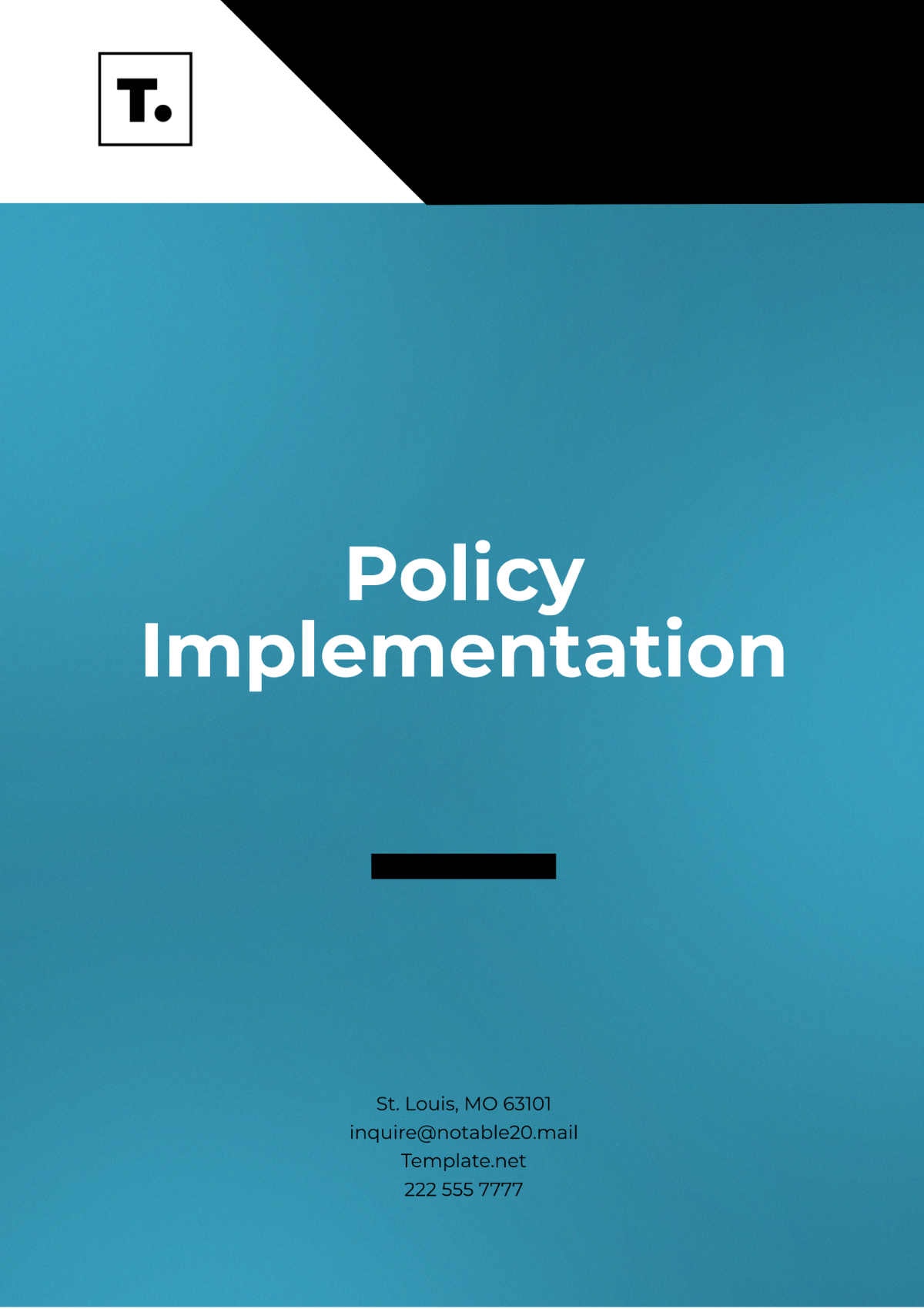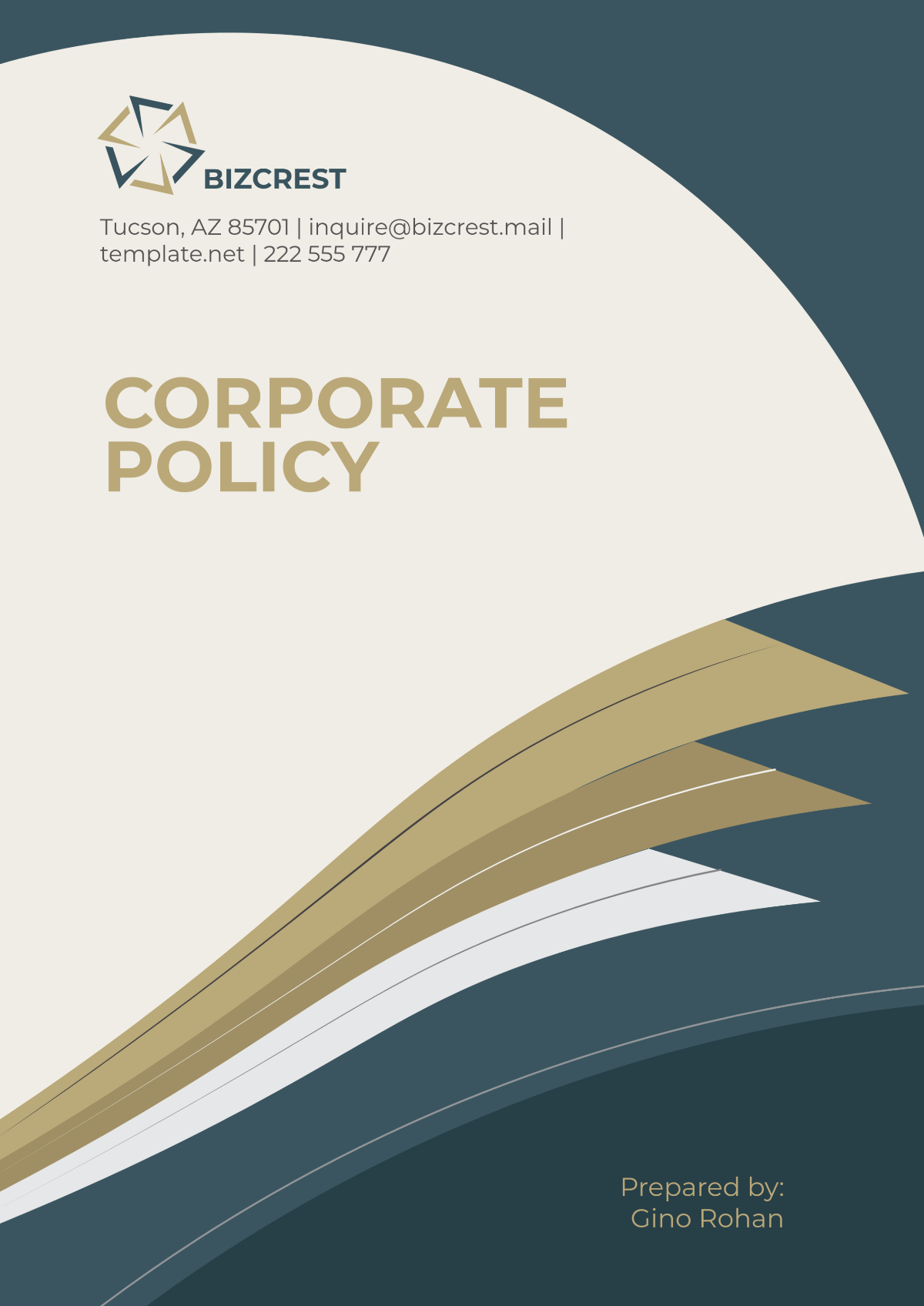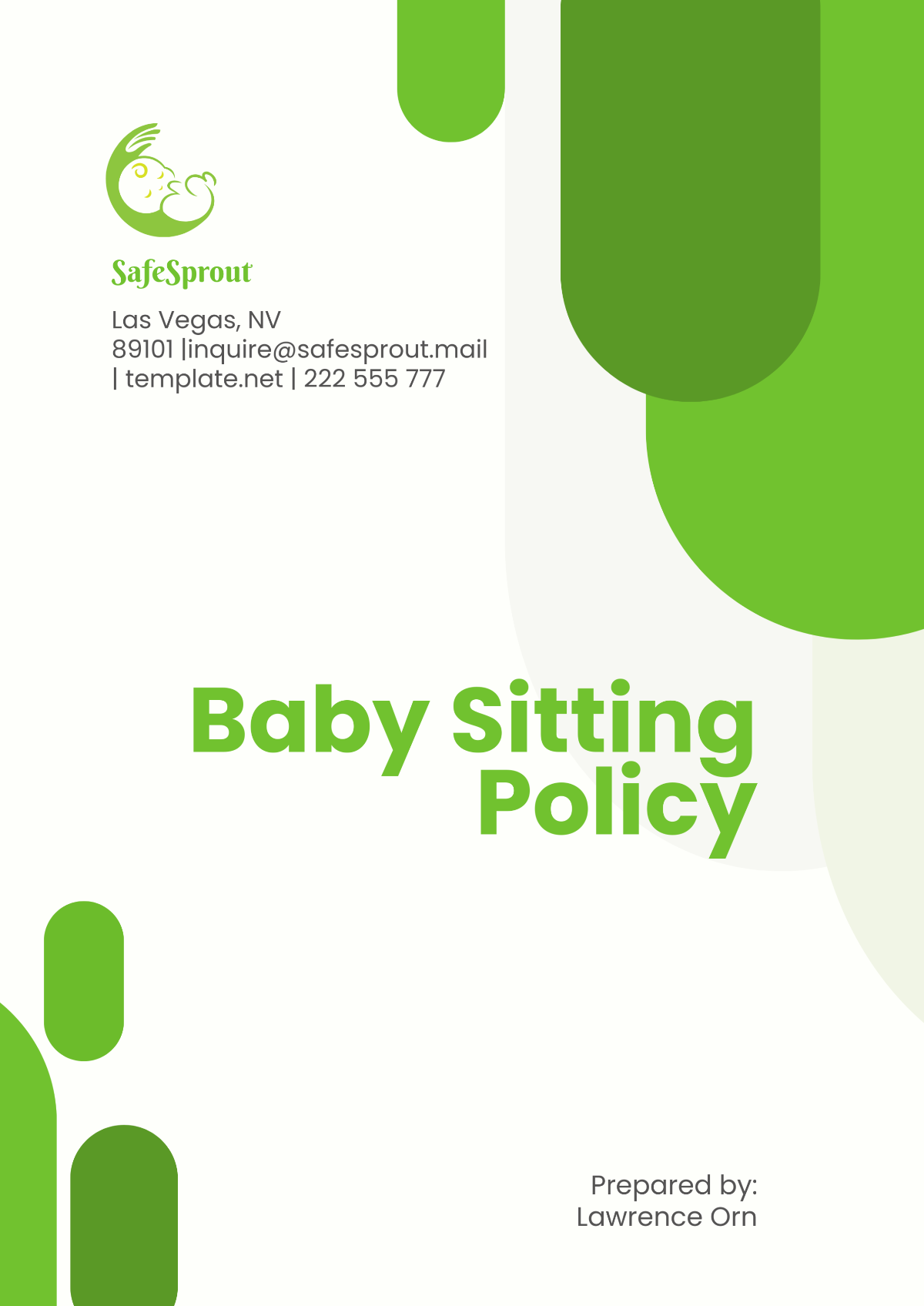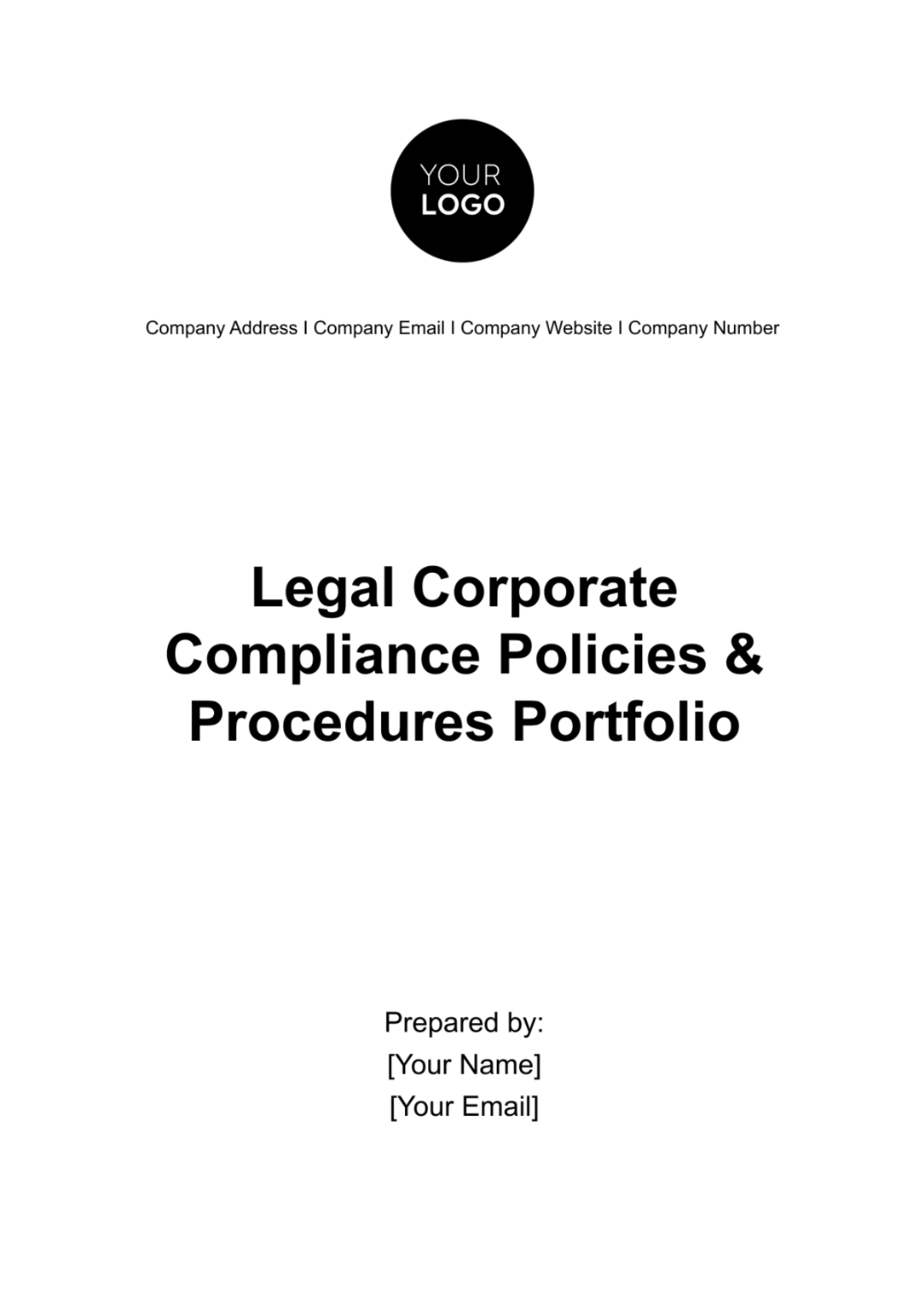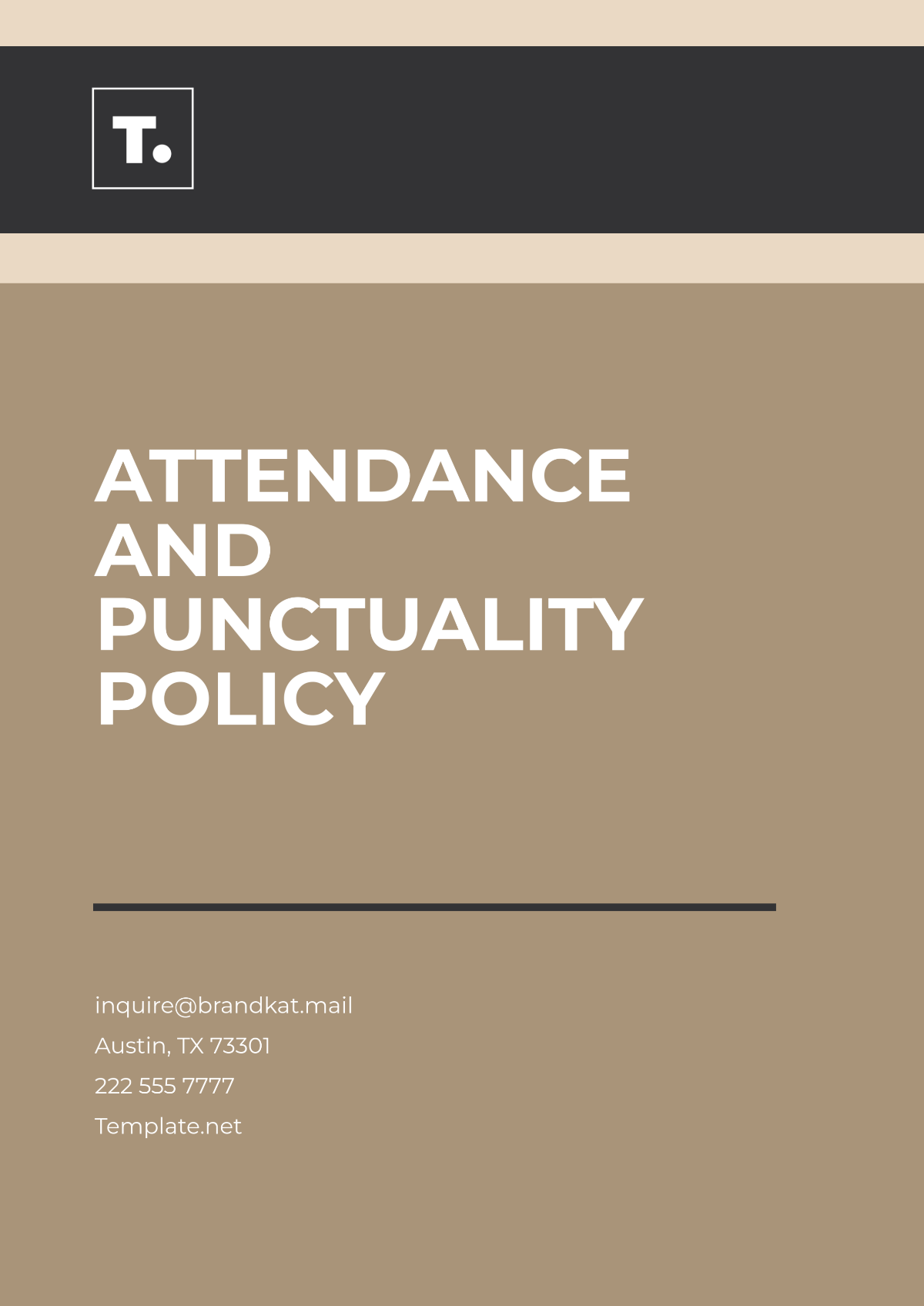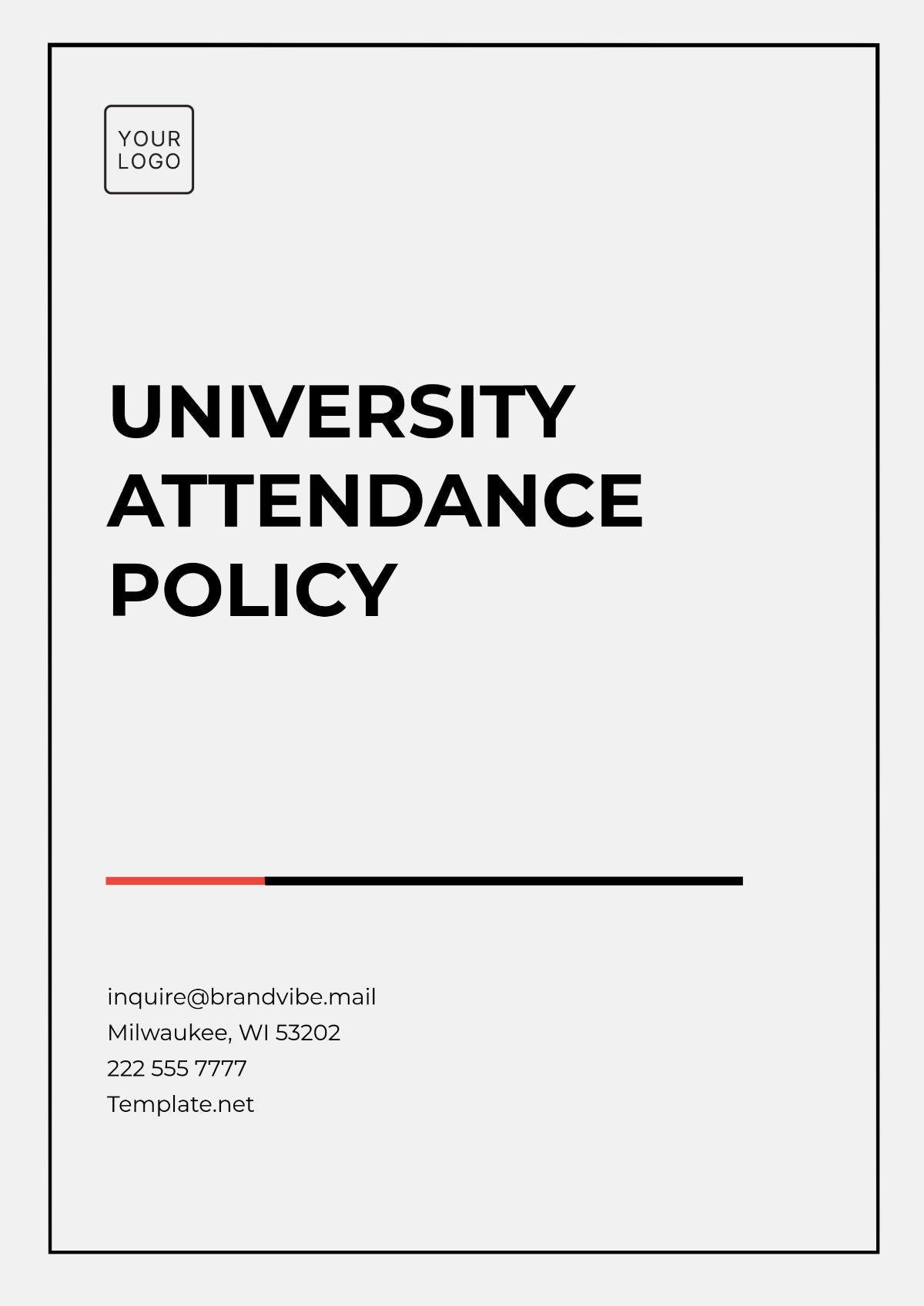Agriculture Procedure Policy
I. Introduction
A. Purpose
The purpose of this Agriculture Procedure Policy is to establish standardized procedures and guidelines to ensure efficient, sustainable, and safe agricultural practices at [Your Company Name]. This policy aims to enhance productivity, ensure the safety of employees, and protect the environment through the implementation of best practices in agriculture. By providing a structured approach to agricultural activities, [Your Company Name] seeks to optimize resource use, improve yield quality, and promote long-term sustainability. This document serves as a comprehensive guide for all stakeholders involved in agricultural operations, outlining their roles and responsibilities in achieving these goals.
B. Scope
This policy applies to all agricultural operations conducted by [Your Company Name], including crop production, livestock management, and related activities. It encompasses all employees, contractors, and stakeholders involved in these operations, ensuring that everyone adheres to the established guidelines and procedures. The policy is relevant to all agricultural sites and facilities operated by [Your Company Name], regardless of size or location. Additionally, this policy addresses the interaction with external entities, such as suppliers, regulatory bodies, and the community, to ensure that all agricultural practices align with broader environmental and social objectives.
C. Objectives
Sustainability: To promote sustainable agricultural practices that protect and preserve natural resources, ensuring that future generations can continue to benefit from them. This includes the responsible use of soil, water, and biodiversity, as well as minimizing the environmental footprint of agricultural activities.
Safety: To ensure the safety and well-being of all employees involved in agricultural operations. This involves providing a safe working environment, proper training, and access to necessary safety equipment to prevent accidents and injuries.
Productivity: To optimize agricultural productivity through the use of best practices and innovative technologies. By continuously improving techniques and adopting new technologies, [Your Company Name] aims to maximize yields and efficiency.
Compliance: To ensure compliance with relevant local, state, and federal regulations. Adhering to legal requirements helps avoid penalties and supports the company's reputation as a responsible and ethical operator.
Quality: To maintain high standards of product quality and integrity. This includes implementing quality control measures throughout the production process to ensure that the final products meet or exceed market expectations.
II. Agricultural Practices
A. Crop Production
1. Soil Management
1.1 Soil Testing Regular soil testing is essential for monitoring soil health and fertility. Soil samples should be collected and analyzed at least twice a year, before planting and after harvest. The results will guide fertilizer application and soil amendment decisions, ensuring that crops receive the right nutrients at the right times. Detailed soil analysis reports should be maintained to track changes in soil composition over time, helping to identify trends and address potential issues proactively.
1.2 Soil Fertility To maintain optimal soil fertility, organic and inorganic fertilizers should be used judiciously. Organic matter, such as compost and green manure, should be incorporated into the soil to improve structure and nutrient content. Regularly rotating crops and incorporating cover crops can also enhance soil fertility by replenishing nutrients and improving soil texture. Soil fertility management should include periodic liming to correct soil acidity and the use of bio-fertilizers to promote beneficial microbial activity.
1.3 Erosion Control Erosion control measures, such as contour farming, terracing, and the use of cover crops, should be implemented to prevent soil degradation and loss. Maintaining ground cover through mulching and planting perennial vegetation can reduce the impact of heavy rainfall and wind. Additionally, implementing buffer strips and riparian zones along waterways can help filter runoff, trapping sediments and reducing erosion. These practices not only protect soil resources but also improve water quality by reducing sedimentation.
2. Planting and Seeding
2.1 Seed Selection Select high-quality seeds that are suited to the local climate and soil conditions. Use certified seeds to ensure genetic purity and resistance to diseases. Seed selection should consider factors such as germination rates, growth cycles, and yield potential. By choosing the right varieties, [Your Company Name] can enhance crop performance and reduce the risk of crop failure due to adverse conditions or pests.
2.2 Planting Techniques Employ appropriate planting techniques, such as direct seeding or transplanting, to optimize plant growth and yield. Ensure proper spacing to reduce competition for nutrients and light. Techniques such as precision planting can improve seed placement accuracy, enhancing crop uniformity and productivity. Implementing raised bed planting can improve drainage and root development, particularly in areas with heavy or compacted soils.
2.3 Crop Rotation Implement crop rotation strategies to prevent soil depletion and reduce the risk of pest and disease outbreaks. Rotate crops with different nutrient requirements and growth characteristics. Crop rotation helps break pest and disease cycles, enhances soil structure, and improves nutrient cycling. Developing a multi-year crop rotation plan can optimize the benefits of this practice, balancing short-term productivity with long-term soil health.
3. Irrigation Management
3.1 Irrigation Systems Utilize efficient irrigation systems, such as drip or sprinkler irrigation, to minimize water wastage. Regularly inspect and maintain irrigation equipment to ensure optimal performance. The use of automated irrigation systems with soil moisture sensors can enhance water use efficiency by delivering precise amounts of water based on crop needs. Implementing these systems can reduce water consumption and improve crop health.
3.2 Water Conservation Adopt water conservation practices, such as mulching and scheduling irrigation during cooler parts of the day, to reduce evaporation and improve water use efficiency. Using drought-resistant crop varieties and implementing dry farming techniques can further reduce water dependency. Water conservation should also include capturing and storing rainwater for irrigation, reducing the reliance on groundwater and other sources.
3.3 Monitoring and Scheduling Implement soil moisture monitoring and weather forecasting tools to schedule irrigation effectively. Adjust irrigation schedules based on crop needs and environmental conditions. Regularly updating irrigation plans to reflect changes in weather patterns and crop growth stages can optimize water use and improve crop yields. Advanced irrigation management systems can provide real-time data, enabling more responsive and precise irrigation decisions.
4. Pest and Disease Management
4.1 Integrated Pest Management (IPM) Adopt an Integrated Pest Management (IPM) approach that combines biological, cultural, physical, and chemical methods to control pests and diseases. Monitor pest populations and use pesticides as a last resort. IPM emphasizes preventive measures, such as crop rotation, resistant varieties, and habitat manipulation, to reduce pest pressures. Regular scouting and monitoring can identify pest issues early, allowing for targeted and effective interventions.
4.2 Biological Controls Utilize beneficial organisms, such as predators and parasites, to control pest populations. Introduce natural enemies of pests to the agricultural ecosystem. Conservation biological control involves creating habitats that support beneficial organisms, enhancing their effectiveness in pest management. By fostering a balanced ecosystem, biological controls can provide sustainable and long-term pest management solutions.
4.3 Chemical Controls When chemical controls are necessary, select pesticides that are effective and have minimal impact on non-target organisms. Follow label instructions and safety guidelines strictly. Implementing pesticide resistance management strategies, such as rotating active ingredients, can prevent the development of resistant pest populations. Regularly reviewing and updating chemical control practices ensures compliance with regulations and promotes safer use of pesticides.
B. Livestock Management
1. Animal Welfare
1.1 Housing and Shelter Provide adequate housing and shelter to protect livestock from extreme weather conditions. Ensure that housing facilities are clean, well-ventilated, and spacious enough to allow free movement. Proper housing design should include provisions for waste management, temperature control, and natural light. Regular maintenance and cleaning of housing facilities are crucial to prevent disease outbreaks and ensure animal comfort.
1.2 Nutrition and Feeding Supply balanced and nutritious feed to livestock to promote growth and health. Ensure that clean water is available at all times. Feeding programs should be tailored to the specific needs of different livestock species and life stages, incorporating high-quality feed ingredients and supplements. Regularly evaluating and adjusting feed rations based on nutritional analysis and animal performance data can optimize growth and productivity.
1.3 Health Management Implement regular health check-ups and vaccination programs to prevent diseases. Isolate sick animals to prevent the spread of infections. Health management should also include parasite control, dental care, and hoof trimming to maintain overall animal well-being. Working with veterinarians to develop comprehensive herd health plans can ensure timely and effective disease prevention and treatment.
2. Breeding Practices
2.1 Breeding Programs Develop and implement breeding programs to improve genetic quality and productivity of livestock. Use artificial insemination or natural mating techniques as appropriate. Breeding programs should focus on traits such as growth rate, disease resistance, and reproductive efficiency. Maintaining genetic diversity within the herd is important to prevent inbreeding and ensure long-term herd health.
2.2 Record Keeping Maintain detailed records of breeding activities, including animal pedigrees, mating dates, and birth records. Use this information to make informed breeding decisions. Record keeping should also include tracking performance metrics, such as growth rates and milk production, to evaluate the success of breeding programs. Utilizing electronic record-keeping systems can streamline data management and analysis.
3. Waste Management
3.1 Manure Handling Collect and store manure properly to prevent environmental contamination. Use manure as a fertilizer for crops or process it into compost. Implementing manure management plans that include proper storage, treatment, and application methods can minimize nutrient runoff and improve soil fertility. Utilizing anaerobic digesters to process manure can also produce biogas, providing a renewable energy source.
3.2 Waste Disposal Dispose of animal waste in accordance with environmental regulations. Implement waste recycling programs to minimize waste generation. Effective waste management practices should include recycling of bedding materials, composting organic waste, and proper disposal of non-organic waste. Developing a comprehensive waste management plan can reduce environmental impact and enhance sustainability.
C. Equipment and Machinery
1. Maintenance and Inspection
1.1 Regular Maintenance Perform regular maintenance on agricultural equipment and machinery to ensure optimal performance and longevity. Develop a maintenance schedule and keep detailed records of all maintenance activities. Regular maintenance tasks should include cleaning, lubrication, and inspection of key components. Preventive maintenance can reduce the risk of equipment breakdowns and costly repairs.
1.2 Safety Inspections Conduct safety inspections of equipment and machinery to identify and address potential hazards. Ensure that all safety guards and features are in place and functioning correctly. Safety inspections should be performed before and after each use, with a focus on identifying wear and tear, loose parts, and other safety concerns. Implementing a safety inspection checklist can standardize the process and ensure thorough evaluations.
2. Operation and Training
2.1 Operator Training Provide comprehensive training for all equipment operators to ensure safe and efficient use of machinery. Training should cover equipment operation, safety procedures, and emergency response. Regular refresher courses and hands-on training sessions can reinforce proper techniques and keep operators updated on new equipment and technologies.
2.2 Operational Guidelines Develop and distribute operational guidelines for all equipment and machinery. These guidelines should include step-by-step instructions, safety protocols, and troubleshooting tips. Ensuring that operators have access to clear and concise operational manuals can reduce the risk of accidents and improve equipment performance.
D. Environmental Protection
1. Resource Conservation
1.1 Water Conservation Implement water-saving technologies and practices, such as drip irrigation and rainwater harvesting, to reduce water usage. Regularly monitor water use and adjust practices to optimize efficiency. Promoting water conservation through employee training and awareness programs can foster a culture of sustainability and encourage responsible water use.
1.2 Energy Efficiency Adopt energy-efficient technologies and practices to reduce energy consumption. Use renewable energy sources, such as solar or wind power, where feasible. Implementing energy audits and tracking energy use can identify areas for improvement and guide energy conservation efforts. Investing in energy-efficient equipment and lighting can further reduce energy costs and environmental impact.
2. Pollution Control
2.1 Chemical Management Store and handle chemicals, such as pesticides and fertilizers, in accordance with safety guidelines. Prevent chemical spills and leaks through proper storage and handling practices. Developing spill response plans and providing training on chemical safety can reduce the risk of environmental contamination. Implementing integrated pest management and precision agriculture techniques can also minimize the use of chemicals.
2.2 Waste Management Implement waste management practices to reduce, recycle, and properly dispose of agricultural waste. Develop waste reduction and recycling programs to minimize landfill use. Educating employees on waste segregation and recycling can enhance the effectiveness of waste management initiatives and promote environmental stewardship.
3. Biodiversity Protection
3.1 Habitat Conservation Protect and restore natural habitats on and around agricultural sites. Implement practices that promote biodiversity, such as agroforestry and the creation of wildlife corridors. Collaborating with conservation organizations and participating in habitat restoration projects can enhance biodiversity and ecosystem services.
3.2 Sustainable Practices Adopt sustainable agricultural practices, such as crop rotation, cover cropping, and reduced tillage, to promote soil health and biodiversity. Sustainable practices can improve ecosystem resilience and support long-term agricultural productivity. Providing incentives for sustainable practices can encourage widespread adoption and contribute to environmental conservation.
III. Safety Procedures
A. Employee Training
1. Orientation and Onboarding
1.1 New Employee Orientation All new employees should undergo a comprehensive orientation program that covers company policies, safety procedures, and job-specific training. Orientation should include an introduction to [Your Company Name]'s agricultural operations, key personnel, and organizational structure. Providing new employees with a thorough understanding of their roles and responsibilities can improve performance and reduce the risk of accidents.
1.2 Safety Training Provide safety training for all employees, focusing on hazard recognition, emergency procedures, and the proper use of personal protective equipment (PPE). Regular safety drills and refresher training sessions should be conducted to reinforce safety protocols. Ensuring that employees are well-versed in safety practices can reduce the likelihood of workplace injuries and enhance overall safety.
2. Ongoing Training
2.1 Skills Development Offer ongoing training programs to develop and enhance employee skills. Training should cover new technologies, best practices, and regulatory updates. Encouraging continuous learning and professional development can improve employee competence and adaptability. Providing access to online courses, workshops, and certification programs can support skills development and career advancement.
2.2 Refresher Courses Conduct regular refresher courses to reinforce critical skills and knowledge. Focus on areas such as equipment operation, safety procedures, and environmental practices. Refresher courses can help employees stay current with industry standards and maintain high levels of proficiency. Scheduling periodic training sessions and assessments can ensure that employees retain essential skills and knowledge.
B. Personal Protective Equipment (PPE)
1. PPE Requirements
1.1 Mandatory PPE Ensure that all employees wear the appropriate PPE for their tasks. This includes gloves, safety goggles, helmets, and protective clothing. PPE requirements should be clearly communicated to employees, and signage should be posted in relevant areas to remind them of the necessary equipment. Regularly reviewing and updating PPE standards can ensure that employees are adequately protected from workplace hazards.
1.2 PPE Maintenance Regularly inspect and maintain PPE to ensure its effectiveness. Replace damaged or worn-out equipment promptly. Providing proper storage facilities and training on PPE care can extend the lifespan of equipment and ensure its reliability. Implementing a PPE inventory management system can track usage and facilitate timely replacements.
2. Training on PPE Use
2.1 Proper Usage Train employees on the correct use of PPE, including how to wear, adjust, and remove it safely. Emphasize the importance of PPE in protecting against specific hazards. Demonstrating proper PPE usage through hands-on training and visual aids can enhance understanding and compliance. Providing opportunities for employees to practice using PPE can build confidence and proficiency.
2.2 Emergency Situations Include training on the use of PPE in emergency situations, such as chemical spills or fire outbreaks. Ensure that employees know how to respond quickly and effectively. Conducting emergency response drills that incorporate PPE usage can prepare employees for real-life scenarios and improve safety outcomes.
C. Emergency Procedures
1. Emergency Planning
1.1 Emergency Response Plan Develop and implement an emergency response plan that outlines procedures for various types of emergencies, such as fires, natural disasters, and chemical spills. The plan should include evacuation routes, assembly points, and communication protocols. Regularly reviewing and updating the emergency response plan can ensure its effectiveness and relevance. Providing employees with emergency contact information and quick reference guides can facilitate prompt and coordinated responses.
1.2 Emergency Drills Conduct regular emergency drills to ensure that employees are familiar with the emergency response plan and can respond effectively. Drills should simulate different scenarios to test preparedness and identify areas for improvement. Evaluating drill performance and providing feedback can enhance emergency readiness and ensure continuous improvement.
2. First Aid and Medical Assistance
2.1 First Aid Training Provide first aid training for employees, including CPR and basic medical procedures. Ensure that first aid kits are readily available and stocked with necessary supplies. Training employees in first aid can enable them to provide immediate assistance in case of injuries or medical emergencies, potentially saving lives and reducing the severity of injuries.
2.2 Medical Assistance Establish protocols for seeking medical assistance in case of serious injuries or illnesses. Maintain a list of emergency contacts and nearby medical facilities. Ensuring that employees know how to access medical assistance and transport injured persons can expedite treatment and improve outcomes.
IV. Compliance and Documentation
A. Regulatory Compliance
1. Legal Requirements
1.1 Local Regulations Adhere to local agricultural regulations and guidelines. Stay updated on changes in local laws and adjust practices accordingly. Maintaining open communication with local authorities and participating in regulatory consultations can ensure compliance and support positive community relations.
1.2 State and Federal Regulations Comply with state and federal regulations governing agricultural practices. This includes environmental laws, labor laws, and food safety standards. Regularly reviewing regulatory updates and consulting with legal experts can ensure that [Your Company Name] remains compliant with all applicable laws. Implementing compliance monitoring systems can track adherence and identify potential issues early.
2. Certification and Standards
2.1 Industry Certifications Pursue industry certifications, such as organic certification or Good Agricultural Practices (GAP) certification, to demonstrate compliance with high standards. Certifications can enhance marketability and consumer trust. Developing certification plans and conducting internal audits can prepare for external certification processes and ensure ongoing compliance.
2.2 Quality Standards Implement quality standards for all agricultural products. Regularly audit production processes to ensure that products meet these standards. Establishing quality assurance teams and utilizing third-party inspections can verify adherence to quality standards and identify areas for improvement.
B. Record Keeping
1. Documentation
1.1 Operational Records Maintain detailed records of all agricultural operations, including planting, irrigation, fertilization, pest management, and harvesting. Accurate record-keeping can support decision-making, traceability, and compliance. Utilizing digital record-keeping systems can streamline data management and improve accessibility.
1.2 Health and Safety Records Keep records of all health and safety training, incidents, and inspections. Use this information to improve safety protocols and prevent future incidents. Implementing electronic health and safety management systems can facilitate reporting, tracking, and analysis of safety data.
2. Reporting
2.1 Internal Reporting Prepare regular internal reports on agricultural activities, performance metrics, and compliance status. Share these reports with relevant stakeholders and use them for continuous improvement. Establishing reporting schedules and formats can ensure consistency and clarity in communication.
2.2 External Reporting Submit required reports to regulatory bodies and certification agencies. Ensure that all reports are accurate and submitted on time. Developing reporting templates and utilizing software tools can streamline the preparation and submission of external reports.
V. Monitoring and Evaluation
A. Performance Monitoring
1. Key Performance Indicators (KPIs)
1.1 Agricultural KPIs Develop and monitor key performance indicators (KPIs) for agricultural operations, such as crop yield, water use efficiency, and pest management effectiveness. Regularly reviewing KPI data can identify trends, successes, and areas needing improvement. Utilizing data analytics tools can enhance the accuracy and relevance of KPI monitoring.
1.2 Safety KPIs Track safety-related KPIs, such as injury rates, safety training completion, and PPE compliance. Use this data to improve safety protocols and training programs. Implementing safety performance dashboards can provide real-time insights and support proactive safety management.
2. Data Collection
2.1 Automated Systems Use automated data collection systems, such as sensors and drones, to gather real-time information on crop health, soil conditions, and weather patterns. Integrating automated systems with data management platforms can enhance data accuracy and availability. Leveraging remote sensing technologies can provide comprehensive and timely data for decision-making.
2.2 Manual Data Collection Conduct regular manual inspections and data collection to supplement automated systems. Ensure that data is recorded accurately and consistently. Training employees on data collection techniques and utilizing standardized forms can improve the reliability and comparability of manual data.
B. Evaluation and Improvement
1. Internal Audits
1.1 Audit Schedule Develop an internal audit schedule to regularly evaluate compliance with agricultural procedures and policies. Audits should cover all aspects of operations, including safety, environmental practices, and regulatory compliance. Establishing audit teams and utilizing audit management software can streamline the audit process and enhance effectiveness.
1.2 Audit Reports Prepare detailed audit reports that highlight findings, recommendations, and areas for improvement. Share these reports with relevant stakeholders and develop action plans to address identified issues. Conducting follow-up audits can ensure that corrective actions are implemented and effective.
2. Continuous Improvement
2.1 Feedback Mechanisms Implement feedback mechanisms, such as employee surveys and suggestion boxes, to gather input on agricultural practices and policies. Encouraging open communication and providing channels for anonymous feedback can enhance employee engagement and identify valuable improvement opportunities.
2.2 Innovation and Research Encourage innovation and research to improve agricultural practices. Stay updated on industry trends and emerging technologies. Collaborating with research institutions and participating in industry conferences can facilitate knowledge sharing and innovation. Allocating resources for research and development projects can support the adoption of cutting-edge practices and technologies.
VI. Conclusion
A. Summary
The Agriculture Procedure Policy of [Your Company Name] provides a comprehensive framework for conducting agricultural operations efficiently, sustainably, and safely. By adhering to the guidelines and procedures outlined in this document, [Your Company Name] can enhance productivity, ensure compliance with regulations, and promote environmental stewardship. This policy reflects [Your Company Name]'s commitment to excellence in agriculture and serves as a guide for all stakeholders involved in its agricultural operations.
B. Future Goals
Looking forward, [Your Company Name] aims to continuously improve its agricultural practices by incorporating new technologies, enhancing sustainability efforts, and fostering a culture of safety and innovation. By setting ambitious yet achievable goals, [Your Company Name] strives to be a leader in the agricultural industry, contributing to global food security and environmental sustainability. Future initiatives will focus on expanding research and development, improving resource efficiency, and enhancing community engagement.
C. Acknowledgments
[Your Company Name] acknowledges the contributions of all employees, partners, and stakeholders in the development and implementation of this Agriculture Procedure Policy. Their dedication and commitment to best practices in agriculture are essential to the success of our operations. We also recognize the importance of continuous learning and collaboration in achieving our goals and look forward to ongoing efforts to improve and innovate in the field of agriculture.
